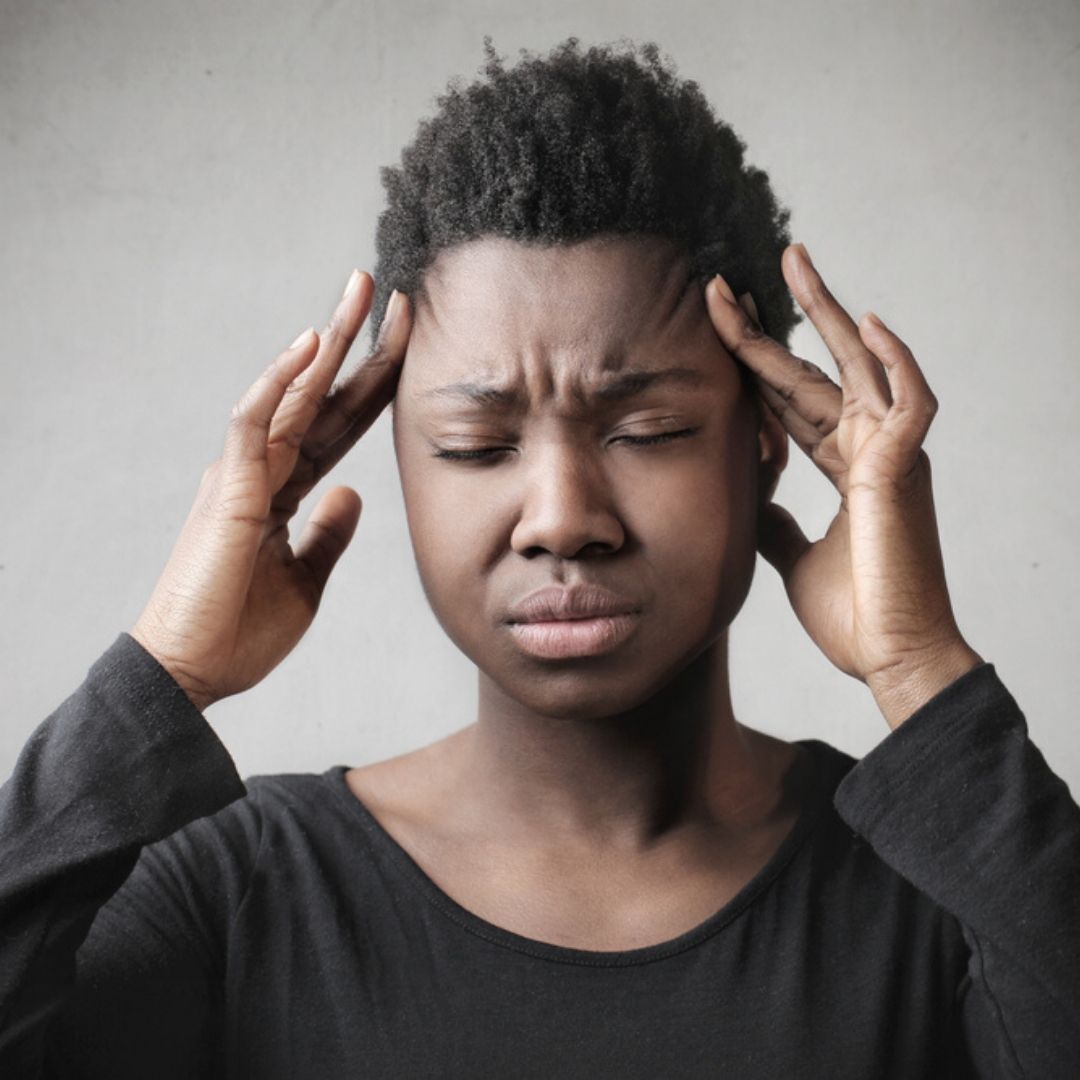Share
Tweet
Share
Mail
Blog

By Michele Henderson
•
23 Dec, 2020
Summer has arrived and as we all know the summer sun can be ruthless! Please remember when you’re enjoying the sun outside to slip, slop and slap. Looking after your skin is so important, especially with the majority of skin cancers being caused by exposure to the sun!
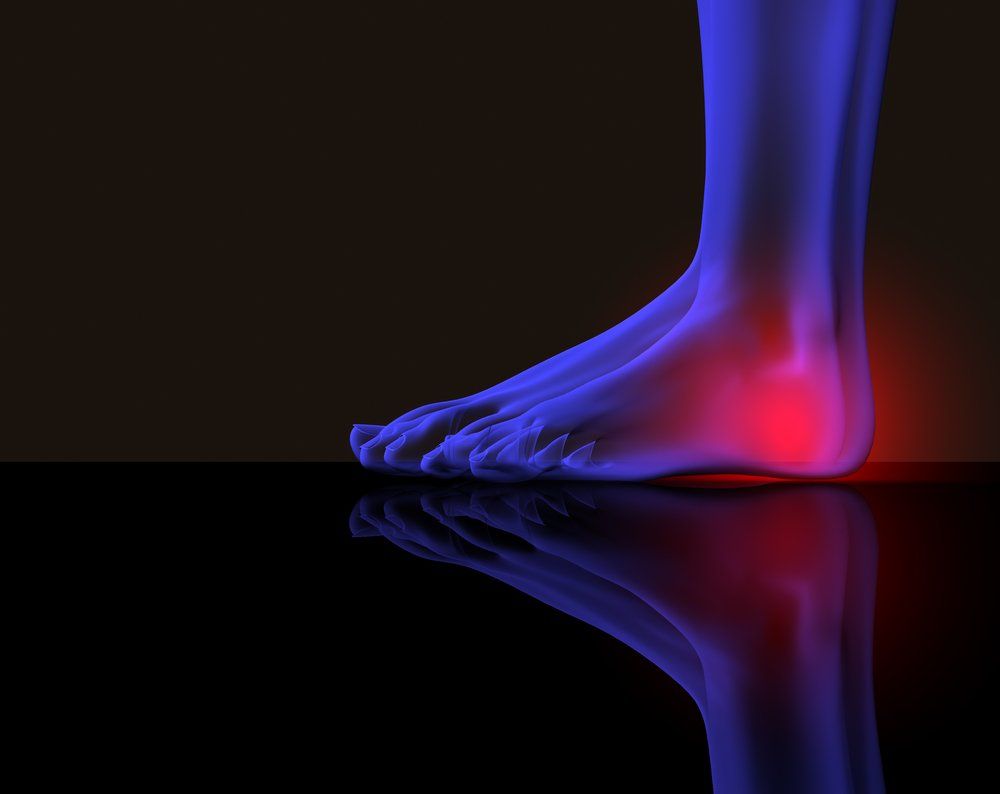
By websitebuilder
•
31 Aug, 2020
It’s morning, and the alarm clock has just told you it’s time to get out of bed. Another few minutes won’t hurt. You check your emails, social media sites, and you even ring your mum to see how the dog slept last night… basically anything to delay putting your feet on the ground and taking those first steps to get the day started. And it’s because of this pain you’ve been getting on the bottom of your heel every morning for the last few weeks. And it's getting worse… Time to see your osteopath! There are a few things that can cause pain on the bottom of the heel, but the most common cause is a condition named plantar fasciopathy (pronounced ‘fash-ee-op-a-thee’ — previously known as plantar fasciitis (pronounced ‘fash-ee-i-tis’)). What is plantar fasciopathy? Plantar fasciopathy is an overuse condition affecting the plantar fascia. The plantar fascia is a layer of soft tissue that stretches along the bottom of the foot, from the heel bone to the metatarsal bones in the front of the foot. It helps to provide stability to the arch of the foot and is similar in make-up to a tendon (the things that attach muscle to bone). If too much stress is placed on this structure, over time the tissue can degenerate, weaken, and start to give you pain. The pain is commonly felt where the plantar fascia attaches into the heel bone. Risk factors Scientific research suggests there are a few groups of people who are more prone to developing plantar fasciopathy. These include: • Runners • People who are over-weight and lead a sedentary lifestyle and/or spend long periods standing for work (e.g. a factory worker) Important things to consider with these at-risk groups include: • Foot alignment and arch height: Having a very low or high arch or having excessive or not enough movement in the foot joints can lead to the development of this problem. • Amount of training: Increased levels of training can place greater stress on the plantar fascia more regularly. • Footwear: Wearing certain types of footwear when training can lead to an increased risk of plantar fasciopathy (i.e. wearing athletics spikes, or the wrong footwear for your foot type). • Muscle strength and flexibility: Decreased strength in the muscles that control toe movement, as well as weakened and tight calf, hamstring and gluteal muscles are all associated with higher rates of plantar fasciopathy. The signs and symptoms of plantar fasciopathy include: • Pain at the bottom of the heel • Pain that appears as a gradual onset • Pain felt first thing in the morning (i.e. taking those first steps out of bed in the morning is classic!) • Pain that decreases with activity, but increases again afterwards (early stages) • Pain that increases with activity and pain felt at night (latter stages) • Pain felt after periods of prolonged rest during the day (i.e. being sat at your desk for 2-3 hours and then getting up again) • Tight calf, hamstring and gluteal muscles • Weak muscles that help to support the arch of the foot • Stiff or over-flexible foot and ankle joints Diagnosis and treatment First things first, if you have heel pain that sounds similar to the picture we have painted above, make an appointment with us now (you know what to do… call us on 9432 5011. Once we have asked the relevant questions, performed the necessary tests, and are convinced that the issue stems from the plantar fascia, we will formulate a plan with you with short and long-term goals to reach within a set time. Initial hands-on treatment will include a combination of massage, joint mobilisation and manipulation, and dry needling of the lower limb muscles with the aim of correcting any mechanical issues that are playing a role in this issue. Depending on the presentation, we may also use tape around the foot and ankle to provide support and reduce the stress being placed on the tissues. Other treatment will include advice on weight loss (if required), training regimen, footwear, and exercise prescription that helps to lengthen and strengthen tight and weak muscles. Some cases of plantar fasciopathy may require a foot orthotic or in-sole to provide extra support to the foot whilst wearing shoes. We can advise on footwear too! Plantar fasciopathy is a tricky condition to treat which may require ongoing treatment for several months. We will endeavour to get you pain-free in the shortest time possible, so we recommend following all advice to a T, which may include a reduction in the amount of training you are doing at present. When you start to hit goals and we see improvements being made, we’ll have you back up to your full training program before you can say “plantar fasciopathy”. Imaging? People regularly ask if they need imaging for such an issue, but the majority of cases of plantar fasciopathy can be diagnosed with a thorough case history and physical assessment. This is where we excel! Imaging is there for cases that do not respond to treatment and for those instances where we need to rule out a more serious problem. If you need help with heel pain, please call us today to book your appointment. Let’s have you putting your best foot forward, ASAP! 👌 References 1. Thompson, JV. et al. 2014. Diagnosis and management of plantar fasciitis. Journal of Ameri-can Osteopathic Association. 114 (12). Available from: https://jaoa.org/aoa/content_public/journal/jaoa/933660/900.pdf 2. Brukner, P. et al. 2017. Clinical Sports Medicine. 5th ed. Australia: McGraw Hill Education 3. Harvard Health Publishing. 2007. Easing the pain of plantar fasciitis. [Online]. Available from: https://www.health.harvard.edu/newsletter_article/Easing_the_pain_of_plantar_fasciitis. [Ac-cessed 15 Jul 2020] 4. Orthoinfo. 2010. Plantar fasciitis and bone spurs. [Online]. Available from: https://orthoinfo.aaos.org/en/diseases--conditions/plantar-fasciitis-and-bone-spurs. [Ac-cessed 15 Jul 2020
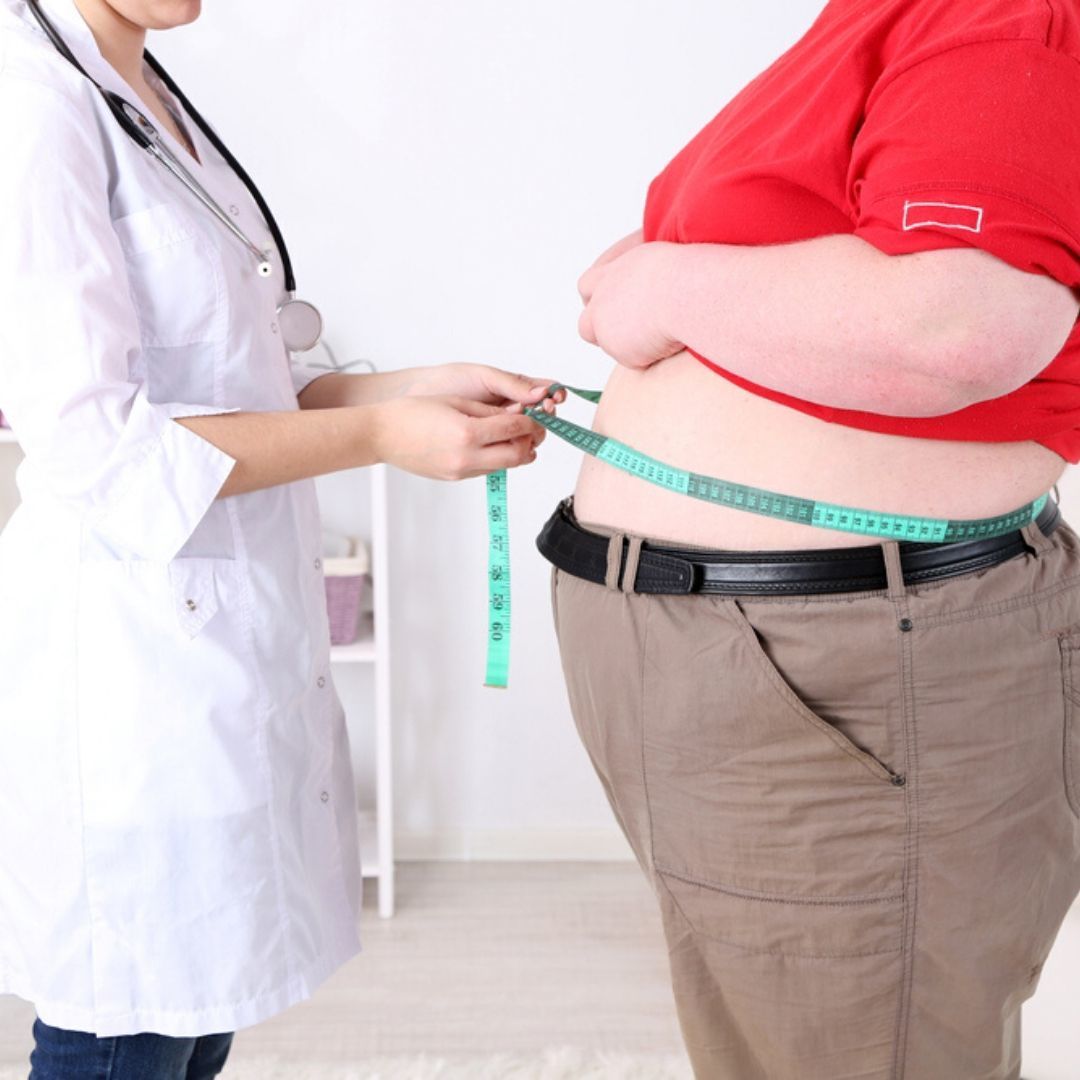
By websitebuilder
•
02 Mar, 2020
What is obesity? Obesity (and being overweight) is defined by the WHO as “the abnormal or excessive fat accumulation that presents a risk to health”. Obesity is traditionally measured using a person’s Body Mass Index (BMI), which is calculated by dividing their weight by their height (in metres) squared. A BMI which equates to 25 or over is classified as overweight… 30 or more equals obese. Due to the inability to distinguish gender and fat from muscle, the process is flawed. The Relative Fat Mass index (RFM) which takes into account someone’s gender, height and waist circumference is a more accurate tool in measuring someone’s fat mass and their risk of developing health problems from it. Effects of obesity on the body Now we know what obesity is, let’s explore what this means for the body. These are some of the known negative side effects of being obese: • Increased risk of numerous diseases: With obesity comes an increased risk of developing high blood pressure, heart disease, type-2 diabetes, stroke, respiratory conditions including sleep apnea, osteoarthritis, gallstones, menstrual issues, incontinence, many types of cancer, and mental illness (e.g. depression). • Increased risk of death: Being obese puts you at increased risk of death from all causes, but especially relating to cardiovascular disease (e.g. heart attack/failure). • Complications during pregnancy: Mother and baby are both at risk. Mothers are more likely to develop high blood pressure and gestational diabetes, as well as difficulties during labour and retaining weight post-pregnancy. For the baby, the risk of late fatal death increases, as does the risk for developing neural tube defects (e.g. spina bifida). • Increased levels of pain : Evidence suggests obesity puts the body in an inflammatory state causing pain. Increased load on the joints leads to breakdown of cartilage which drives more inflammation. There is an increased rate of depression which exacerbates the pain experience as well. People then become afraid to move through pain and being sedentary means lack of movement through the joints, and they continue to degenerate. It’s a vicious cycle! • Poor quality of life: Obesity makes life hard. Carrying out everyday tasks becomes laborious. All of a sudden, hanging out the washing and cleaning the house or car can seem harder than they should do. It can also affect people’s desire to go out and be social. People who are obese are also at risk of developing undesirable body odour which can make social situations difficult. The side effects of being overweight, especially obese, are many and very serious. It is simple… Being obese will increase your chances of serious disease and death, as well as impact your life negatively in many other ways. It is daunting and challenging trying to lose weight. If you need help, please talk to us during your next visit here at Back into Action Osteopathic Group and we will be happy to discuss options with you. We can work alongside your GP, or other health professionals, to help work out what the best and safest option is for you – getting you on the right track to a healthier, happier self. References 1. World Heath Organisation. 2020. Obesity. [Online]. Available from: https://www.who.int/topics/obesity/en/. [Accessed 01 Feb 2020] 2. Kobo, et al. 2019. Relative fat mass is a better predictor of dyslipidemia and metabolic syndrome than body mass index. Cardiovascular Endocrinology & Metabolism. 8 (3). 77-81. Available from: https://journals.lww.com/cardiovascularendocrinology/Fulltext/2019/09000/Relative_fat_mass_is_a_better_predictor_of.4.aspx 3. National Heart Lung and Blood Institutes. 1998. Clinical Guidelines on the Identification, Evaluation, and Treatment of Overweight and Obese Adults: The Evidence Report. National Institutes of Health. No. 98-4083. Available from: https://www.nhlbi.nih.gov/files/docs/guidelines/ob_gdlns.pdf 4. McVinnie, DS. 2013. Obesity and pain. British Journal of Pain. 7 (4). 163-170. Available from: https://www.ncbi.nlm.nih.gov/pmc/articles/PMC4590160/ 5. NHS. 2019. Body Odour. [Online]. Available from: https://www.nhs.uk/conditions/body-odour-bo/. [Accessed 01 Feb 2020]
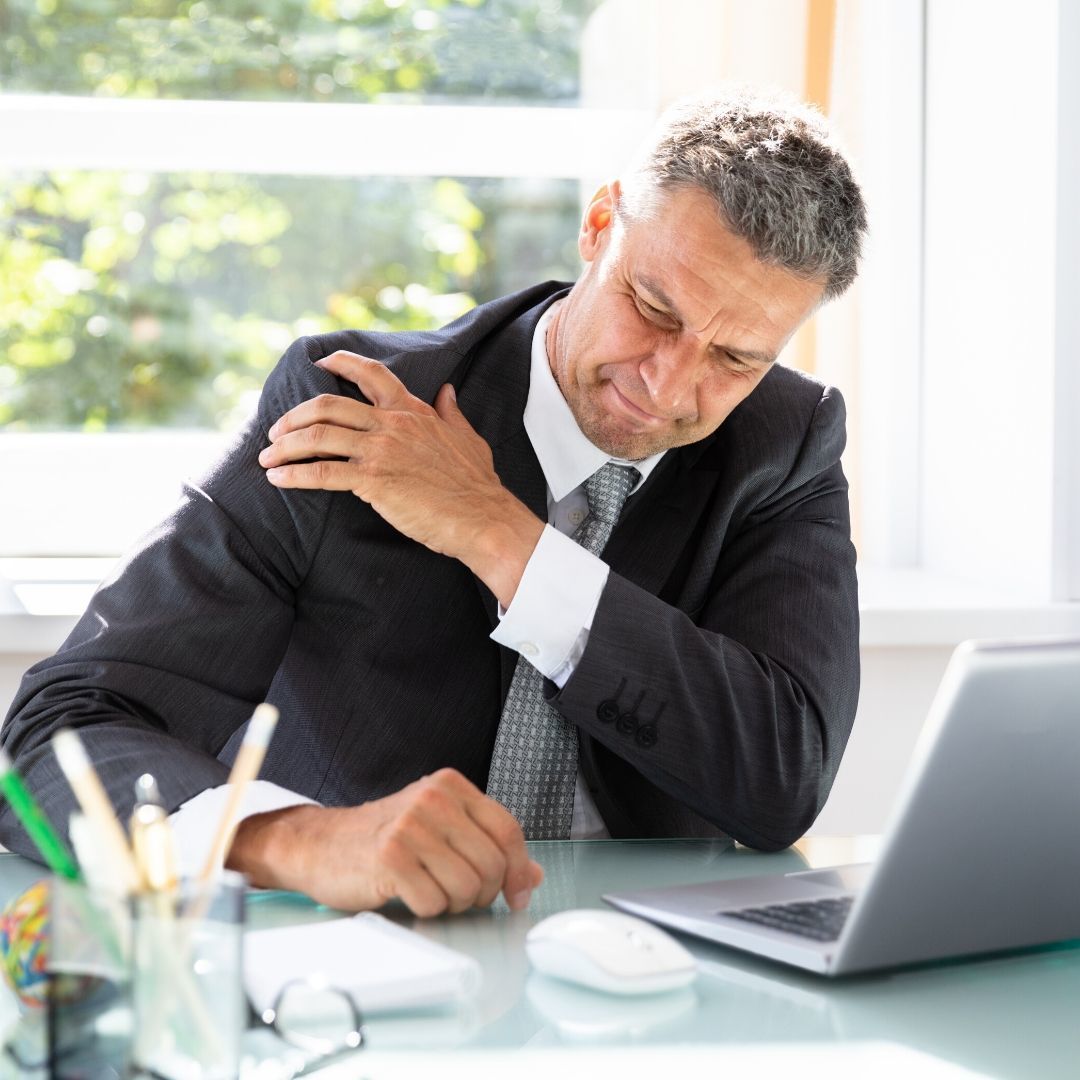
By websitebuilder
•
04 Feb, 2020
A common shoulder complaint that we see is shoulder impingement, otherwise known as subacromial impingement. Say ‘shoulder’ and most people think of a ball and socket joint. This joint does indeed make up a large part of the shoulder, but there is much more to it than that. Over the top of the ball and socket joint sits a bony ‘bridge’ which is made up of the collar bone (aka the clavicle), shoulder blade (specifically the ‘acromion’ part of the shoulder blade) and a joint which connects the two (aptly named the ‘acromio-clavicular’ joint). Beneath the bridge and above the ball and socket joint is a small gap called the sub-acromial space (sub = underneath). It is within this space that the above mentioned impingement occurs and if present, may cause pain when moving the arm. Why does impingement occur? Well, there are quite a few soft tissues which run through this space that help keep the shoulder functioning. These parts include the tendons of the biceps and one of the rotator cuff muscles, a ligament and a fluid-filled sac called a ‘bursa’. Bursi allow smooth, friction less movement around joints and can be found all over the body. Any of these body parts can be involved in shoulder impingement if they become inflamed. Repeated, overhead arm use in throwing sports, or chronic poor positioning of the shoulder and posture in desk workers can lead to these soft tissues becoming irritated and inflamed. For example, a cricketer who spends a large part of their career throwing a ball could lead to increased stress placed on the rotator cuff tendon that passes through the space, leading to inflammation, wear and tear, and poor movement. This then has a direct effect on other surrounding structures, so a person may end up with an in-flamed bursa too. Signs and symptoms When someone has shoulder impingement, they may experience any or all of the following: • Pain when moving the arm (e.g. our cricketer above may feel pain when throwing) • Decreased range of motion in the shoulder • Weakness when using the arm on the affected side • Reduced ability to perform everyday tasks such as reaching up high in a cupboard, doing up a bra, putting on a coat or holding/lifting a child Get to the osteo quick sharp! If you want to get on top of your shoulder pain quickly, then we recommend a trip to see us here at Back Into Action Osteopathic Group After some thorough questioning and assessment, we will work out what lifestyle or movement factors are responsible for your pain. We’ll get to work with our hands straight away. Using a combination of soft tissue massage, joint mobilising, and many other techniques, we will aim to reduce your pain and get you moving better. Someone with a shoulder problem nearly always has an issue related to neck or back movement, so don’t be surprised if we go looking further afield on the body for answers to your problem. If you are a thrower, we may ask you to demonstrate a throw so we can see how you are moving (don’t worry, we won’t ask you to do this if you are in acute pain). Likewise, if you are a desk worker, we may ask to look at your desk set up and sitting posture. Getting you to take a photo of yourself at your desk is often helpful for us to see if you need to make some changes that may be affecting your posture day-to-day. When it comes to any lifestyle advice, whether it’s the hobbies you have or the way you sleep, we’ve also got you covered! We pride ourselves on awesome treatment, but shoulders are often tricky to treat, and some cases may take longer than others. To ensure you get back on the right path as quick as possi-ble, always follow our advice between treatments, and please do your exercises! If you have weakness somewhere which is leading to your pain, a few treatments are not going to resolve this. Weakness and instability need strengthening, and strength takes time to build. Consistency is key with exercise. We will educate you on what you need to do, but you need to be the one to do it at the end of the day. It’s a team effort. We know it’s hard to keep motivated, but rest assured we will always be there on those days when you need a hand! If you have shoulder pain, then don’t stand on ceremony, book an appointment today by contacting our clinic on 9432 5011 / www.backintoaction.net.au We’ll have you back throwing balls from the boundary quicker than you can say howzat! And if you have no idea what howzat means, then we suggest you ask the audience or phone a friend! ;-) References: 1. Brukner, P. and Khan, K. 2017. Clinical Sports Medicine. 5th ed. McGraw Hill Education : Australia 2. Umer, M. et al. 2012. Subacromial impingement syndrome. Orthopedic Reviews. 4 (2). e18. https://www.ncbi.nlm.nih.gov/pmc/articles/PMC3395987/ 3. Bennett, S. et al. 2017. The use of osteopathic manual therapy and rehabilitation for sub-acromial impingement syndrome: A case report. Explore. 13 (5). 339-343. https://www.sciencedirect.com/science/article/abs/pii/S1550830717300149
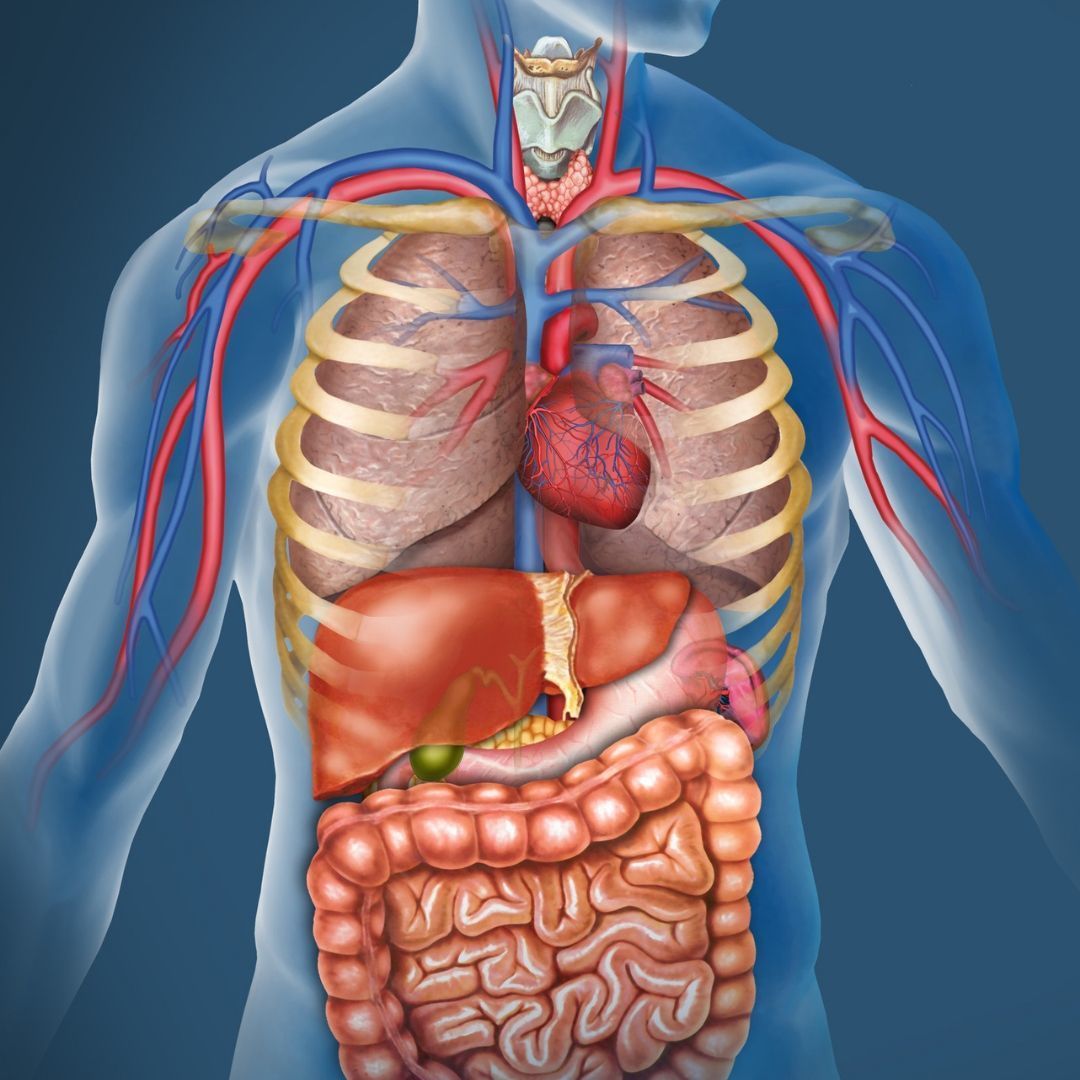
By websitebuilder
•
04 Feb, 2020
Did you know that you don’t always have to strain a muscle or sprain a ligament in order to feel pain? Deep inside your body are the cogs that keep your body ticking over… your organs. We have lots of organs inside us: The heart, lungs, stomach, intestines, liver, gallbladder, and more. Well, did you know that when something goes wrong with these organs, they can also give you pain? To add to this, sometimes that pain is felt in a completely different part of the body than where the organ is located! This can lure you in to thinking that something is wrong with that body part when really there isn’t. Sounds silly right? Let us explain further… In scientific terms, we are referring to a phenomenon called viscero-somatic pain or a viscero-somatic reflex. ‘Viscero’ refers to ‘organ’ and ‘somatic’ refers to ‘body part’. So, by definition, viscero-somatic pain is pain that comes from an organ that is felt in a specific body part. And for each organ, there is a specific body part or parts that you will generally feel the pain in. It all comes down to how the body is wired in the nervous system. We’ll give you an example to make this a little clearer… When someone has a heart attack, the classic symptom is chest pain (although not always). However, they will often experience other symptoms such as left-sided neck, jaw, shoulder and arm pain. The reason for this is when the heart muscle becomes devoid of oxygen from a blocked artery, a nerve signal is sent to the spinal cord and up towards the brain to alert the brain that something is wrong. At the same level of the spinal cord where those heart signals enter, there are also other nerves entering that relate directly to the muscles and skin from the neck, jaw, shoulder and arm. The theory is that the brain cannot distinguish where the problem is coming from, due to the close proximity of the nerves in the spinal cord, and therefore you may feel pain in both the chest and in these other areas. It’s pretty crazy right?! A problem with the liver or gallbladder can give pain symptoms in the abdomen and also in the right shoulder. It’s for the same reason as above, but just a slightly different wiring for that organ. As an Osteo, we will be looking for certain signs and symptoms if we suspect this might be hap-pening with you. These might include: • Pain that is deep, diffuse and difficult to localise • Pain that is difficult to reproduce in the clinic room • Changes in the skin, such as sweating, dryness, redness or changes in sensation • Changes in the muscles, such as spasm or rigidity • Pain which is unaffected by activity or rest We’ll also be very interested in your medical history and will ask you questions to see if you have a history of digestive, breathing or urinary issues (this depends of course on the organ we suspect may be the issue). There may be a few sensitive questions we need to ask, so please do not be offended if we dig deep. It’s all to ensure we get to the root cause of your issue. Some of our treatment may also be aimed at affecting the target organ itself. We’ll be sure to talk you through any treatment techniques before we perform them. Rest assured, if we feel you need to be seen by a GP or specialist, we’ll point you in the right direction to ensure you are in capable hands. References 1. Chila, A. 2011. Foundations of Osteopathic Medicine. 3rd ed. Philadelphia: Wolters Kluwer Health/Lippincott Williams & Wilkins 2. Sikander, S. and Dickenson, A. 2012. Visceral pain - the ins and outs, the ups and downs. Current Opinion Support Palliative Care. 6 (1). 17-26. Available from: https://www.ncbi.nlm.nih.gov/pmc/articles/PMC3272481/pdf/ukmss-40443.pdf
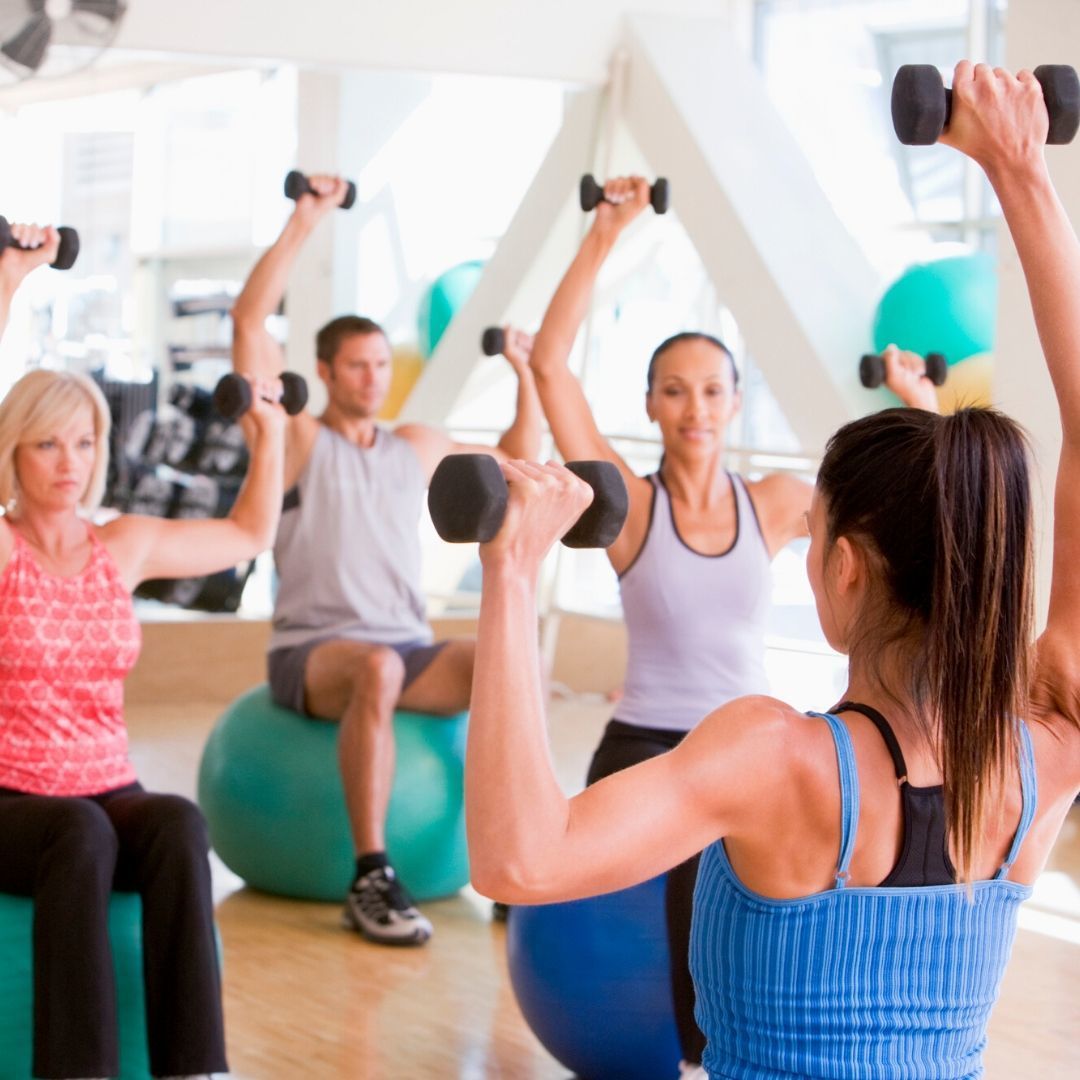
By websitebuilder
•
02 Jan, 2020
Something aerobic The word ‘aerobic’ in an exercise sense relates to the need of oxygen to make energy for the body when exercising. You might hear some people refer to aerobic exercise as ‘cardio’ and this relates to the benefits on the cardiovascular system as a result of doing aerobic exercise. In other words, it’s good for the heart and lungs. Examples of aerobic exercise include walking, jogging, running, cycling and swimming. If you are looking to improve your cardiovascular health or ‘aerobic’ fitness, then trying one of the above options would be ideal. If you’ve never run before, but you’d like to give it a go, then start small. Try a light jog over a short distance to get the heart pumping and build from there. It’s not ideal to try running a 10k from the get-go! Cycling could be on either a push bike or a static exercise bike in the gym. You’ll benefit from both, but we think going out on a push bike is much nicer. Think of all the fresh air and beautiful views you can take in by opting for an outdoor ride. Have your helmet ready and ride safe :) Something stretchy If you’re not feeling the cardio side of things and would like to try something a little gentler, then stretching could be a good fit for you. The benefits of stretching include: • Improving or maintaining muscle flexibility • Reducing the risk of injury due to tight or short muscles • Allowing you to maintain good posture and movement to be able to perform everyday tasks efficiently • Allowing you to exert yourself to higher levels without the worry of injury • Improving fluid movement throughout the body If you’re looking for guidance on a stretching regime, speak to us next time you’re in the clinic. We will be able to tailor one to your needs and abilities. You may also want to consider taking part in a local yoga class. Yoga is fantastic for helping you stay flexible, as well as a whole host of other benefits including increased strength, balance and energy levels. Or maybe strengthening? If you’re still looking for something else, then some strength training could be the right fit for you. If you don’t already have a gym membership, then get to your local gym and see what they have to offer. You can often try the facilities out first before signing up. Or if you don’t like the gym setting (and many people don’t), you could always look into getting your own equipment to use at home. Strength or ‘resistance’ training helps to increase the strength of your muscles which improves support for your joints and skeleton. You can also expect to see other benefits such as weight loss, improved posture, reduced risk of injury, and improved mood and self-esteem (and so much more!). Check out your local Pilates classes (we can help direct you to a good place), as this is a great way of increasing strength and flexibility for your whole body. It is a good idea to have a mixture of all types of exercise to keep your body functioning to its best. One step at a time though. If you need advice, please call us on 9432 5011 and we’ll be happy to book you in for a chat and run through some ideas. Let’s make the new year our chance to try new things! References 1. Healthline. 2018. 10 aerobic exercise examples: How to, benefits, and more. [Online]. Available from: https://www.healthline.com/health/fitness-exercise/aerobic-exercise-examples. [Accessed 11 Dec 2019] 2. Harvard Medical School. 2019. The importance of stretching. [Online]. Available from: https://www.health.harvard.edu/staying-healthy/the-importance-of-stretching. [Accessed 11 Dec 2019] 3. American Osteopathic Association. 2019. The benefits of yoga. [Online]. Available from: https://osteopathic.org/what-is-osteopathic-medicine/benefits-of-yoga/. [Accessed 11 Dec 2019] 4. Victoria Sate Government. 2018. Resistance training - health benefits. [Online]. Available from: https://www.betterhealth.vic.gov.au/health/healthyliving/resistance-training-health-benefits. [Accessed 11 Dec 2019]

By websitebuilder
•
22 Dec, 2019
Be a hydration station: As the sun and your social calendar begin to heat up, there will be plenty of occasions where you might find it tempting to have that extra beer or glass of wine with your friends. It’s always good to have nice drink and a catch up, but everything is healthier in moderation. Combine alcohol with lots of sunshine and you are destined for heatstroke. Make sure you stay hydrated this holiday period to avoid any unwanted illness. Try breaking the alcoholic beverages up with a refreshing glass of water or fruit juice when you are at your Christmas party this year. Don’t overload on sugar: With Christmas comes an exorbitant amount of lollies, cakes, chocolate and other sugary treats hitting the supermarket shelves. We like a gummy bear and a mince pie as much as the next, but to avoid getting hit with endless sugar highs (and the lows that fol-low), make sure you get plenty of nutritious food into your diet every day. Fruit and vegetables will provide you with heaps of essential vitamins, minerals and fibre needed to keep you functioning well. Why not try some antioxidant-rich dark chocolate rather than the milk or white alternatives? Yum! Don’t burn the candle at both ends: It’s easy to get carried away over Christmas with social events and work parties. There are so many people to see and catch up with, that sometimes we sacrifice some of our sleeping hours for party hours. This is okay occasionally, but try to keep it to a minimum. Our bodies won’t make allowances just because it is Christmas. In order to steer clear of illness, keep yourself working and able to attend those social events, you’ll need to pamper yourself with plenty of sleep. Get those Zzz’s in! Take time away from the hustle and bustle: In between all the craziness of Santa coming, make sure you give yourself time to breathe, relax and recuperate from what has probably been a very busy year. Read a book, try some meditation or attend a local yoga or aqua-aerobics class. Your body and mind will thank you for it, and come New Year, you’ll be ready for the year ahead. Do a good deed for those less fortunate: This is by no means a must, but Christmastime is a very lonely time for many people. Think about those without family, a roof over their head, or little money to enjoy the festive period like some may be able to. There are many ways to help out... You could donate to a food bank or charity or volunteer your time at a shelter. It all helps. Remember to smile and be kind when out in the community. You never know when someone is having a bad day. Your smiling face may be just what they need to turn their day around. Good deeds don’t have to cost anything, and they will make you feel awesome. Win-win for the world! Give these a go and we’re sure you will have the healthiest, happiest Christmas of all. Come January you’ll be feeling refreshed and ready to take on the world (and continue to spread joy of course) for another year! Have a great Christmas and we’ll see you in 2020. Tis the season to be jolly, tra-la-la-la laaa, la-la la la!
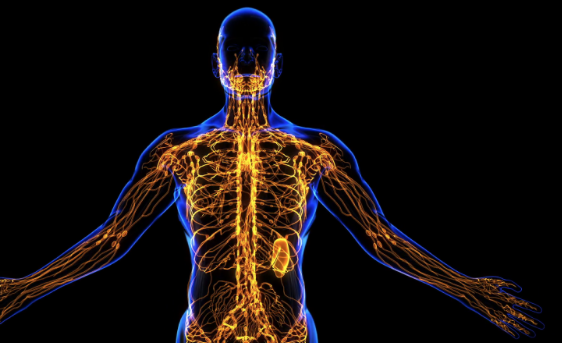
By websitebuilder
•
04 Dec, 2019
So, what is the lymphatic system? One part of it is a collection of small tubes found right throughout the body, and you can think of these tubes as part of the circulatory system of the body. Say ‘circulatory’ and everyone thinks of blood, arteries and veins, but the buck doesn’t stop there. The lymphatic tubes are well and truly just as important as the tubes that carry blood around the body. The other part of the lym-phatic system is a collection of larger tissues found in various areas of the body and you can think of these as part of the body’s defence system. So straight away, you can see it’s pretty darn important! Let us take a look at these areas in a little more detail… A little recap for you on circulation: ar-teries take blood from the heart to the body, and veins take blood back to the heart from the body. Where does the lymphatic system fit in to all of this? Well, the tubes (or vessels) of the lymphatic system roughly follow the pathway of the veins of the body (so back towards the heart). The pump of the heart creates pressure, which drives blood through the arteries where it gets distributed around the body providing life-giving nourishment to all of the different tissues of the body (i.e. our skin, muscles, bones and organs). However, the pressure from the arteries causes some of the fluid and nutrients in blood to leak out into the surrounding areas. And this is where the lymphatic tubes kick in. They pick up the excess fluid and nutrients (mainly proteins) and send it all back towards the heart to be re-used by the body. This ensures every valuable bit of fluid and nutrition in the body is not wasted. Very efficient right?! The fluid that travels through lymph vessels is simply called ‘lymph’. The lymph travels through the lymph vessels by a combination of muscle contractions in the vessel walls, and us moving our bodies (another reason why moving is so good for you!). Along the way back up to the heart, the fluid is passed through a filter station called a lymph node. Here, any of the nasty bacteria, viruses, or even cancer cells that are in the lymph are dealt with swiftly by our defence cells. The freshly cleaned lymph is then sent further along the chain until it reaches a vein close to the heart. It is here where the lymph re-enters the blood and the cycle continues. Before we forget (just kidding, we never forget!), in the small intestines there are some very specialised lymph vessels which help the body to absorb fats from the foods we eat. This is an-other important function of the lymphatic system! Defence, defence, defence! On the defensive front, there are various tissues located around the body (called lymphoid tis-sues) where the production of our defence cells occurs. The main tissues include the ‘thymus’ - which is found in the upper chest region, and the ‘spleen’ - found in the abdomen. If it wasn’t for these handy organs, we would be much more susceptible to infection and disease (and death). So, it’s these organs which help to populate our bodies with the lifesaving defence cells. We have a lot to be thankful for with this system! Osteos love their lymphatic systems So why are we so interested in this system? Well at the heart of Osteopathy lies the principle of maintaining fluid balance and equilibrium throughout the body. We’re all about keeping the flow going. But sometimes flow of fluid in the body can become compromised, maybe due to injury or disease, and then congestion in the tissues occurs and things start to stagnate. This can lead to a whole host of issues including reduction in movement, pain, and imbalance throughout the body. Regardless of your issue, our treatment will aim to remove any barriers to a functioning system to reinstate flow of fluid through the body. Sometimes a dysfunctional lymphatic system can lead to a type of swelling called lymphedema, which is essentially a backlog of lymph fluid. This often occurs in the hands, arms, feet and legs. Depending on the cause, this is something your trusty Osteo is skilled at dealing with, so always seek help if you notice swelling. We hope this has been interesting and educational, and we hope you now have a newfound respect for the intricacies of the human body. After all, it is what keeps you alive, so look after it. Here’s to health!! References: 1. Chila, A. 2011. Foundations of Osteopathic Medicine. 3rd ed. Philadelphia: Wolters Kluwer Health/Lippincott Williams & Wilkins 2. Australasian Lymphology Association. 2019. What is Lymphoedema? [Online]. Available from: https://www.lymphoedema.org.au/about-lymphoedema/what-is-lymphoedema/ [Ac-cessed 05 Aug 2019]
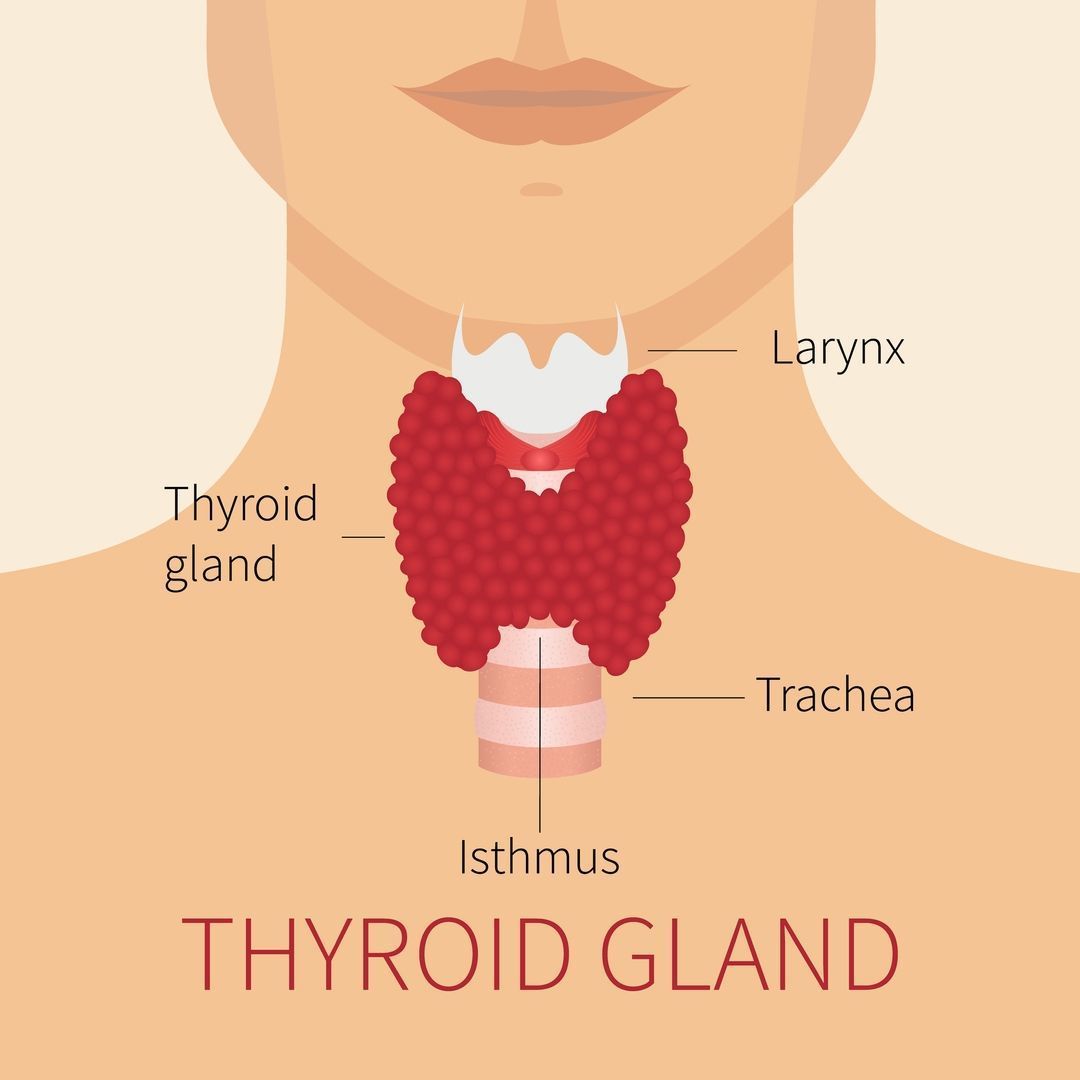
By websitebuilder
•
04 Dec, 2019
The weather is heating up so you’re probably thinking about sunshine, barbecues and butterflies. Now it’s funny you mention butterflies… Because our anatomy lab post this month is covering the thyroid gland, which is a butterfly shaped organ that sits at the bottom of your neck (it also looks remarkably like a spaceship when viewed front on… We think so anyway!) The thyroid gland releases hormones into the blood stream, which travel to all cells in the body. These hormones are responsible for controlling the way our bodies use energy and play a role in many important bodily functions such as breathing, heart and nerve function, muscle strength, body temperature, body weight, the menstrual cycle in women, and much more. How it works Without getting too technical, a special part of the brain tells another part of the brain to tell the thyroid gland to increase or decrease the release of thyroid hormones. There are two main thyroid hormones - T3 and T4. Don’t worry too much about names, but it is interesting to know that your thyroid gland uses iodine from the foods you eat to make these busy hormones. What can go wrong There are two main problems that can arise with this gland - having too little or too much T3 and T4. These conditions are called hypothyroidism and hyperthyroidism respectively. Hypothyroidism, i.e. low levels of hormones in the blood, can lead to some very specific signs and symptoms, affecting many of the bodily functions we mentioned earlier. These include: • Tiredness and fatigue • Weight gain • Feeling colder than others around you • Muscular aches and pains • Muscular weakness • Constipation • Dry skin and hair • Slower heart rate • Heavy periods (in women) On the flip side, hyperthyroidism may present as: • Weight loss • Feeling warmer than others around you • Increased sweating • Nervousness, anxiety and agitation • Tremor or shaking in the hands • Diarrhoea • Hair loss • Faster heart rate and palpitations • Missed or light periods (in women) Why is this important to my osteo? The simple answer to this question is health. We strive to get our patients into a state of good health and away from disease. The primary reason people visit an osteopath is to rid themselves of pain. Often pain is caused by an injury from an accident or fall, but not all pain can be explained in this way. Sometimes pain develops from other causes. Look back over the symptoms for hypothyroidism and you’ll see ‘muscular aches and pains’. If after questioning and examination we can’t come to an obvious muscular, joint or movement diagnosis, our brains will kick in and look for other avenues. This is where our questioning on other parts of the body will come into play. Yes, you may have muscular aches, but if you are also showing signs of unexplained weight gain, constipation, dry skin and fatigue, an alarm bell will ring and we may need to consider referring you to your GP for some thyroid tests. You may still have some movement problems we can help with, but you may also need some help from your doc or a specialist to get your thyroid functioning better. So, don’t worry if we drop a question about bowel habits or your period when you come in for shoulder pains. There is method to our madness and it’s all to make sure we get you moving towards optimal health as soon as possible. Happy thyroid = happy person! References 1. Victoria State Government. 2019. Thyroid gland. [Online] Available from: https://www.betterhealth.vic.gov.au/health/conditionsandtreatments/thyroid-gland. [Accessed 08 October 2019] 2. McKinney and Woodman, 2019. Crash Course: Pathology. 5th ed. Elsevier : United Kingdom 3. Walsh, JP. 2016. Managing thyroid disease in general practice. Medical Journal of Australia. 205(4). 179-184. Available from: https://www.mja.com.au/journal/2016/205/4/managing-thyroid-disease-general-practice
Back Into Action Osteopathic Group - 3 Cherry St Macleod, 3085 -
T: 0493 273 070.
(03) 9432 5011
- info@backintoaction.net.au
New Paragraph
